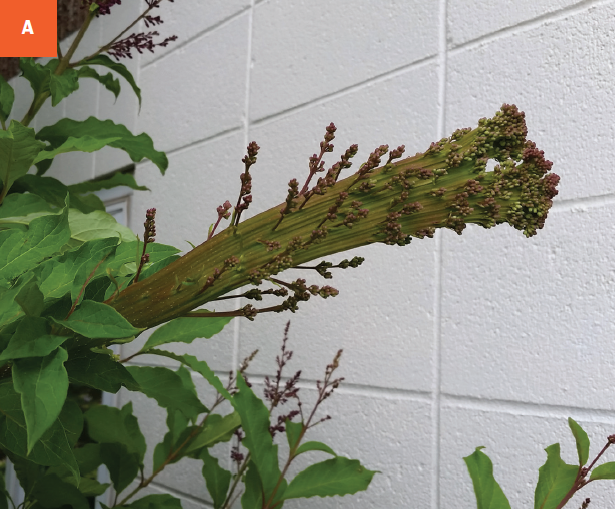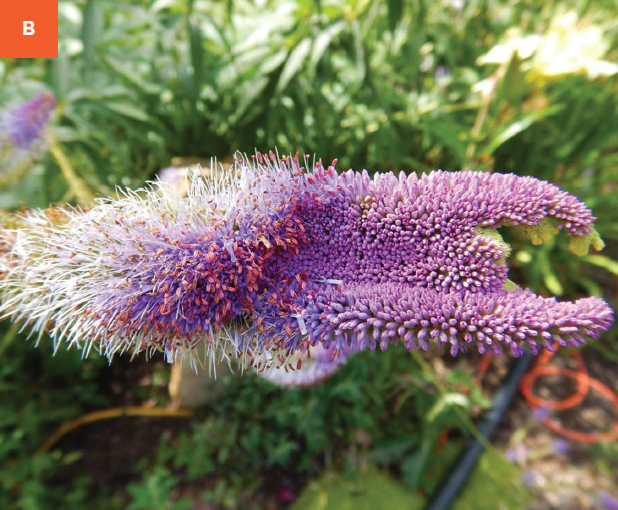Fasciation
DAMAGE/SYMPTOMS Fasciation is a symptom. It most often occurs in stems and causes them to take on a flattened appearance. The contorted tissue may have an elongated or ribbon-like appearance. Flowers with fasciation may have a bushy growth habit. Some affected plants are propagated intentionally due to their tendency towards fasciation.
OCCURRENCE Fasciation occurs in plants due to abnormal activity in the meristem or growing tip of the plant. It can be the result of hormonal or genetic factors. It can also be caused by pathogens (bacterial, fungal, or viral), insect damage, or animal damage. Abiotic issues, such as chemical exposure, mechanical injury and frost, can also cause fasciation.
SUSCEPTIBILITY/TOLERANCE All plants can exhibit fasciation. Trees in the Prunus or Salix genera and the Rosaceae family are examples of plants that display fasciation most often.
MANAGEMENT Affected parts can be pruned out. There is no treatment for fasciation.
A Lilac with a fasciated limb. B Some plants like Veronicastrum sibericum are propogated because of their fasciation.


